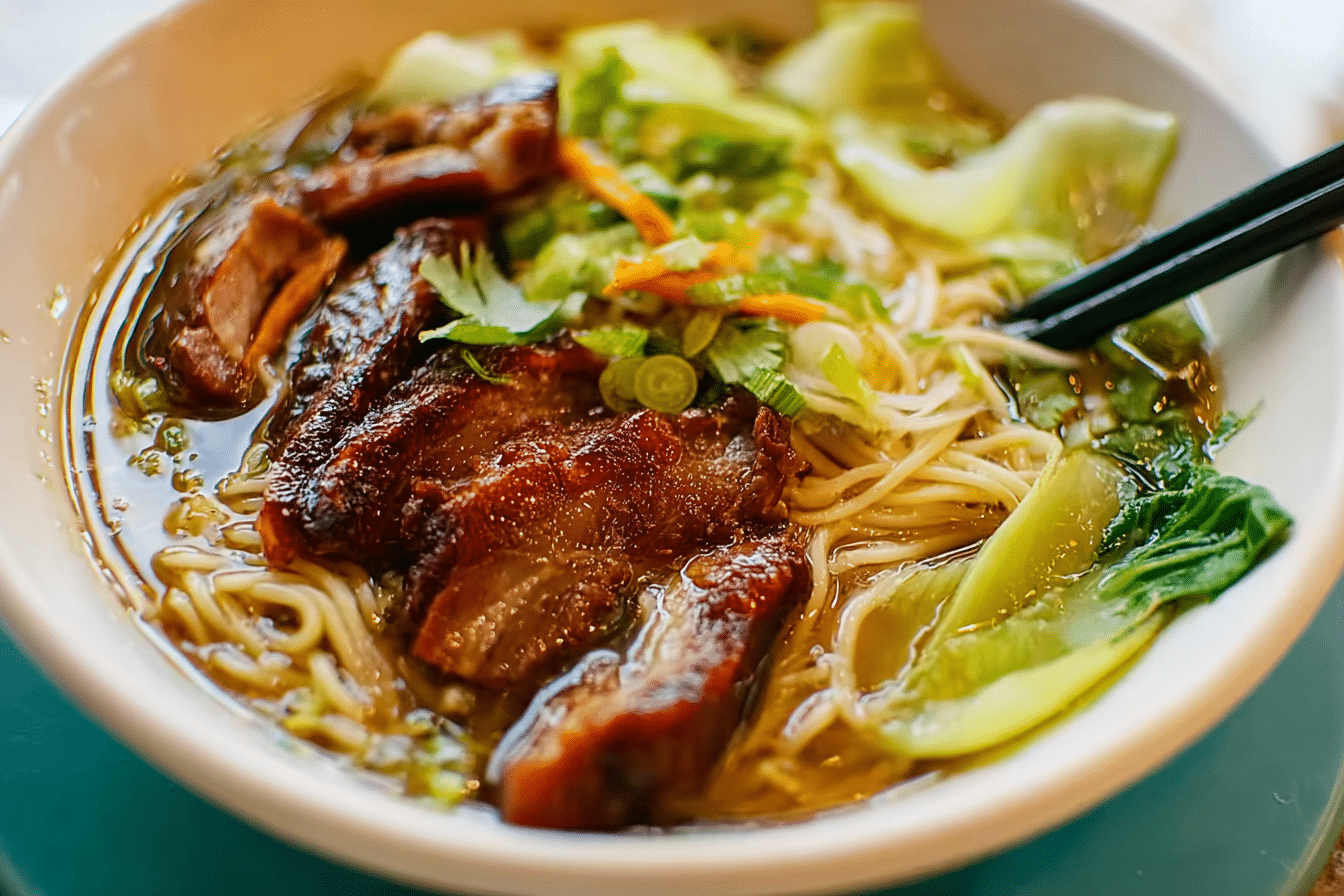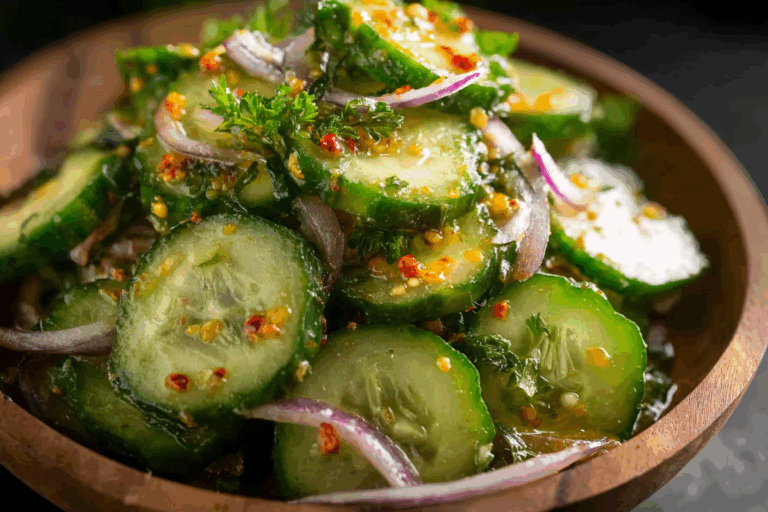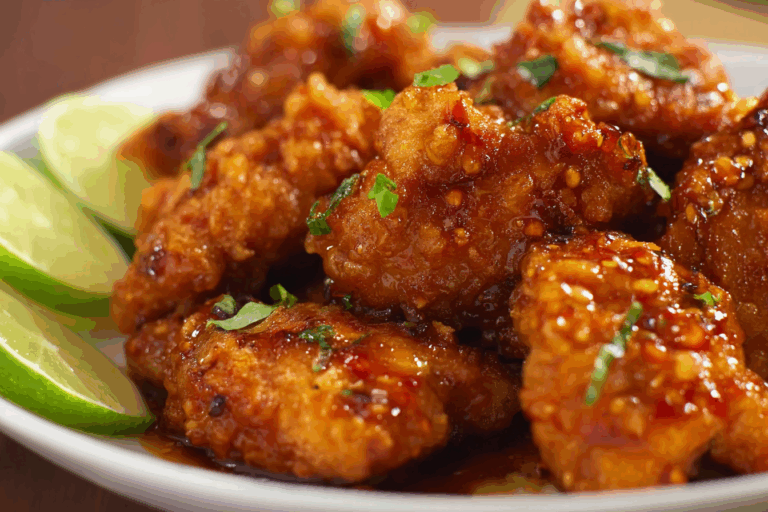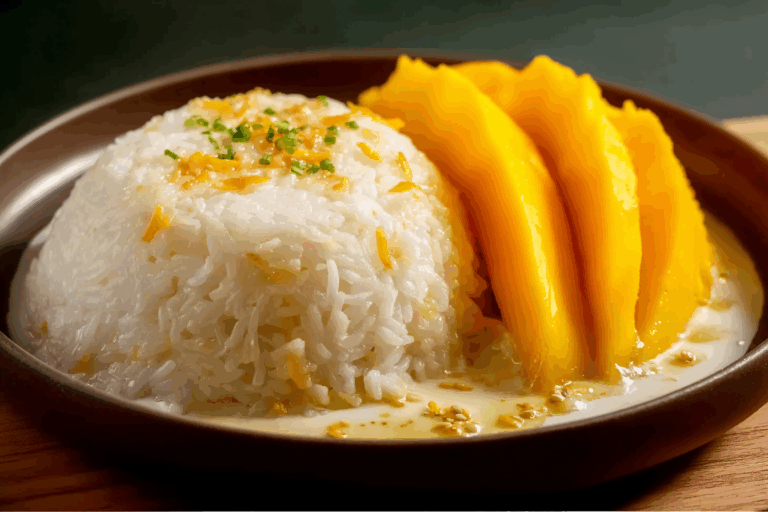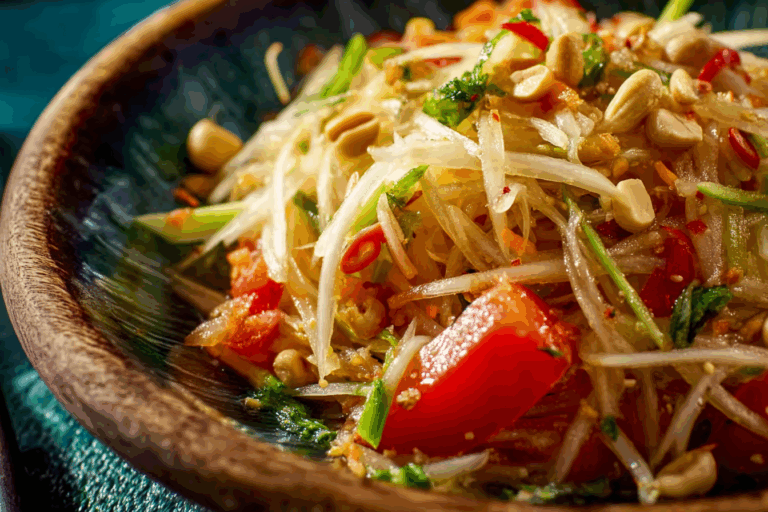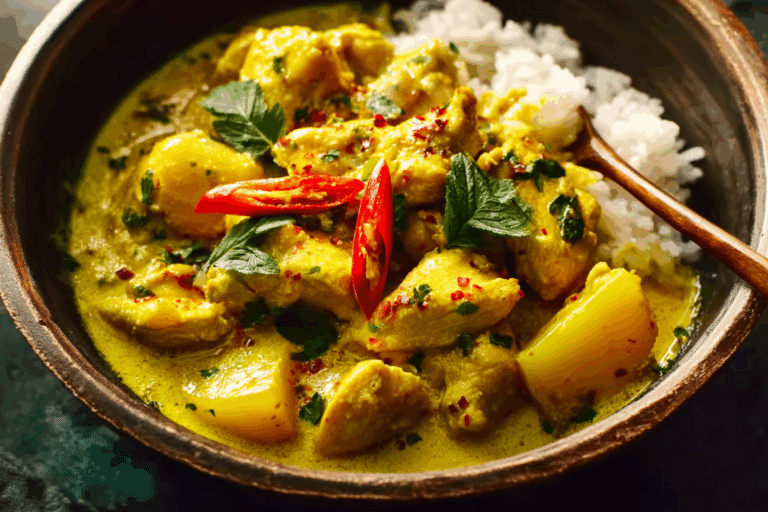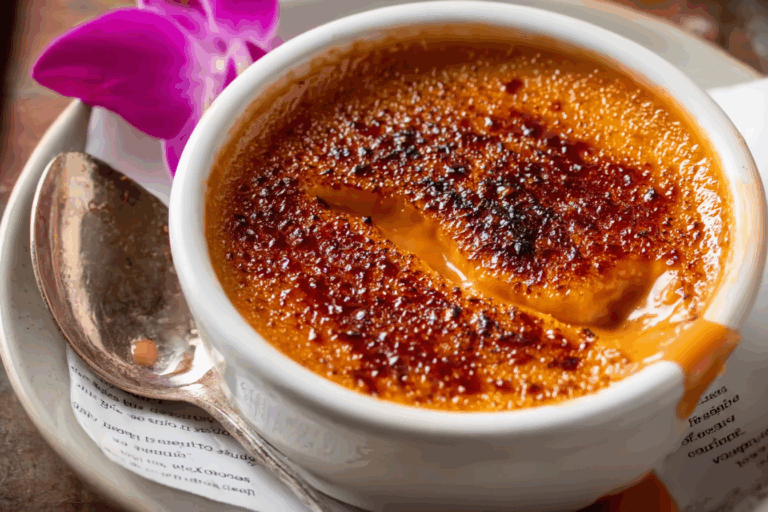How To Make Duck Noodle Soup
Duck noodle soup is one of those timeless, soul-soothing dishes that carries generations of culinary love in each bite. Its silky noodles, aromatic broth, and succulent pieces of roasted duck come together in a single bowl that warms the heart and satisfies the deepest cravings. Whether you enjoy it for lunch, dinner, or late-night comfort, it holds a special place in the culinary cultures of Thailand, Vietnam, and China.
Before diving into the textures and flavors of this classic bowl, it’s worth knowing the roots of the recipe and the story behind this blog. On the About page of JustThaiRecipes, Lina shares her passion for Thai cooking, a journey inspired by her family’s traditions and her partner’s love for authentic Asian flavors. With a mission to make Thai food approachable for every home cook, Lina began sharing simple yet flavorful recipes that carry the true spirit of Thai street food and family meals. That heartfelt story is exactly why this duck noodle soup is more than just another dish—it represents comfort, heritage, and the joy of sharing meals made with care.
This article explores duck noodle soup in depth: its origins, ingredients, cultural significance, and step-by-step guidance to make it at home. You’ll also learn how to personalize the recipe with regional variations like Thai, Vietnamese, and Cantonese styles. By the end, you’ll have the confidence to craft a steaming bowl of duck noodle soup that rivals your favorite takeout spot—and maybe even surpasses it.
You can also learn more about authentic noodle dishes and comforting broths by checking out our popular recipe for Thai Boat Noodles with Beef, another flavor-packed bowl you don’t want to miss.
Table of Contents
Table of Contents
What Is Duck Noodle Soup?
The Definition and Composition of Duck Noodle Soup
Duck noodle soup is a traditional Asian dish that combines roasted duck meat with seasoned broth, fresh vegetables, and noodles. The balance of textures is what makes this soup unforgettable: tender shredded duck, chewy noodles, and slightly crunchy cabbage or leafy greens. The broth is typically clear but deeply flavorful, often enriched with bones, spices, and umami elements like soy sauce or bouillon.
This soup isn’t just a meal—it’s a culinary harmony where rich meat and light broth complement each other perfectly. Depending on the region, the type of noodles, seasoning, and toppings may vary, but the foundation remains: broth, noodles, and duck.
Cultural Significance Across Asian Cuisines
Duck noodle soup appears in various forms across East and Southeast Asia. In Thai culture, it’s a popular street food dish found in open-air markets and roadside stalls. Known locally as “kuay teow ped,” it’s often served with chili vinegar, pickled garlic, and a side of crushed peanuts or chili flakes.
In Vietnamese cuisine, it resembles pho in structure, often featuring a lighter broth and aromatic herbs like Thai basil and cilantro. The duck is commonly poached or roasted and served in wide rice noodles. Meanwhile, Cantonese cuisine elevates the soup with smoky roasted duck, springy egg noodles, and a deeply savory broth simmered for hours.
All of these versions share one goal: to highlight the duck’s rich flavor while delivering a clean, soul-warming experience. Whether eaten in a busy Bangkok alley or a quiet kitchen at home, duck noodle soup stands as a symbol of culinary connection, care, and flavor evolution.
Why It’s Considered a Comfort Dish
What makes duck noodle soup a comfort food isn’t just the flavor—it’s the feeling it gives. The warm broth soothes the body, while the noodles and duck satisfy the appetite. It’s filling, flavorful, and easy to digest, making it perfect for cold weather, recovery meals, or just when you need something hearty and grounding.
Unlike heavily creamy or greasy meals, duck noodle soup offers balance. It’s hearty without being heavy, rich without overwhelming the palate. And with regional additions like sesame oil, napa cabbage, and herbs, it becomes a deeply personal bowl every time it’s made.
A Look Into Its Popularity Around the World
Duck noodle soup has gained international attention, especially in cities like Los Angeles, London, and Sydney, where Thai and Chinese food cultures have a strong presence. Foodies seek it out not just in restaurants but also in takeout shops and home kitchens.
With growing curiosity around Asian comfort food, people are increasingly searching for recipes such as “duck noodle soup near me,” “duck noodle soup Jamie Oliver,” and “Cantonese duck noodle soup.” This growing interest is a testament to its versatility and universal appeal.
Print
Duck Noodle Soup
- Prep Time: 10 minutes
- Cook Time: 30 minutes
- Total Time: 40 minutes
- Yield: 2 servings 1x
- Category: Main Dish
- Method: Simmering
- Cuisine: Asian
- Diet: Halal
Description
A rich and comforting Asian-style Duck Noodle Soup featuring Cantonese roast duck, napa cabbage, and aromatic broth served over fresh noodles.
Ingredients
- 12 ounces Cantonese roast duck (on the bone)
- 4 cups water
- 1 teaspoon chicken bouillon paste (or 1 tablespoon light soy sauce, optional)
- 8 ounces napa cabbage (about 4 large leaves)
- 3/4 teaspoon salt (or 1/2 tsp salt plus 1/4 tsp MSG)
- 1/4 teaspoon sesame oil
- 1/8 teaspoon white pepper
- 8 ounces fresh noodles (or 4 ounces dried)
- 2 tablespoons chopped cilantro
Instructions
- Set aside 4-6 meaty pieces of roast duck for topping. Place the remaining duck in a medium pot with water and bouillon paste or soy sauce. Bring to a boil.
- Once boiling, cover and simmer for 20 minutes.
- Trim and slice the napa cabbage into 3/4-inch strips.
- Boil water in a separate pot for the noodles and cook according to package instructions. Drain and set aside.
- If you reserved duck pieces, reheat them in a 325°F oven for 8-10 minutes and keep warm.
- After the soup has simmered, add napa cabbage, salt, sesame oil, and white pepper. Simmer uncovered for 5 minutes until cabbage is tender.
- Divide cooked noodles between 2 bowls. Ladle the broth and duck pieces into each bowl.
- Top with the reserved roasted duck pieces and garnish with cilantro. Serve hot.
Notes
- If using frozen duck, use the whole duck for the broth and skip the bouillon.
- Fresh noodles yield the best texture, but dried noodles are a good substitute.
- Adjust seasoning to taste; you can add fish sauce or vinegar for extra depth.
- Store broth, noodles, and toppings separately for the best leftovers.
Nutrition
- Serving Size: 1 bowl
- Calories: 520
- Sugar: 3g
- Sodium: 950mg
- Fat: 26g
- Saturated Fat: 7g
- Unsaturated Fat: 16g
- Trans Fat: 0g
- Carbohydrates: 40g
- Fiber: 3g
- Protein: 28g
- Cholesterol: 95mg
Keywords: Duck Noodle Soup, Asian Noodle Soup, Thai Duck Soup, Cantonese Noodles, Comfort Food, Brothy Noodle Bowl
Why Duck Is the Star Ingredient
The Distinct Flavor Profile of Duck Meat
Duck is not your everyday poultry. Compared to chicken or turkey, duck meat has a richer, deeper flavor and a distinct succulence that sets it apart. The fat content in duck, particularly under the skin, renders beautifully during cooking, creating a tender texture that enriches the soup’s broth naturally.
While many noodle soups use pork or chicken, duck provides an earthy, almost buttery taste that balances perfectly with the light saltiness of broth and the neutral base of noodles. The combination is especially popular in traditional Cantonese duck noodle soup, where roasted duck is simmered in bone broth, enhancing the depth of flavor.
Health Benefits and Nutritional Value
Despite its richness, duck is a great source of protein, B vitamins, and iron. In a well-balanced soup like this, you benefit from:
- High-quality protein that supports muscle repair and keeps you full longer
- Iron, which supports oxygen flow and energy production
- B vitamins, especially niacin (B3) and B12, crucial for brain and nerve function
For those looking to indulge without overdoing it, duck noodle soup—particularly with leaner cuts or carefully trimmed skin—is a solid choice. Just be mindful of portion sizes and balance it with vegetables like napa cabbage or bok choy.
The Role of Roast Duck in the Recipe
Using Cantonese-style roast duck adds complexity and texture to the soup. The meat is already seasoned with traditional Chinese spices, giving the broth a head start in flavor development. You can find roast duck pre-cooked at Asian grocery stores or make your own at home using soy sauce, five-spice, and honey for the glaze.
When preparing the soup, it’s recommended to separate the meatiest parts of the duck for topping and use the rest for simmering the broth. This dual-purpose method ensures a deeply flavored soup while maintaining juicy, presentable pieces for serving.
Don’t miss our delicious take on another roasted favorite: Green Curry Fried Rice, a quick weekday option bursting with flavor.
Fresh vs. Frozen vs. Homemade Duck
Your options when sourcing duck include:
- Fresh roast duck: ideal for flavor, often found in Asian delis
- Frozen duck: convenient, requires longer simmering but still delivers
- Homemade roast duck: labor-intensive, but allows full control over seasoning
For this recipe, frozen duck works well if simmered longer to extract flavor into the broth. However, for best results, use Cantonese-style roast duck with crispy skin and juicy meat.
Flavor Enhancements from Duck Bones and Fat
Simmering duck bones in the broth adds collagen and depth. As the bones break down during simmering, they release gelatin, which gives the soup a slightly silky texture and richness that lingers on the palate.
Additionally, duck fat released into the broth provides a natural oil layer that enhances mouthfeel without the need for added butter or cream. It’s one of the subtle elements that makes duck noodle soup more luxurious than other Asian soups.
Check out how duck’s richness can be offset with fruity notes in our Thai Pineapple Fried Rice, where sweet and savory collide beautifully.
What to Pair with Duck Noodle Soup for a Complete Meal
Though duck noodle soup is often a meal on its own, it pairs beautifully with lighter side dishes to create a fuller dining experience. Try:
- Cucumber salad with sesame dressing for freshness
- Fried tofu or spring rolls as a crunchy side
- Thai desserts like Red Rubies Dessert for a sweet finish
Whether it’s your first time cooking with duck or you’re already a fan, this ingredient delivers an unmatched richness that transforms noodle soup into a gourmet experience.
Essential Ingredients for Authentic Duck Noodle Soup

A Breakdown of the Core Ingredients
The success of duck noodle soup depends heavily on the harmony of its ingredients. While there are many versions across Asia, most traditional and modern adaptations share a similar foundation. Here’s a closer look at what you’ll need to create a well-balanced and flavorful bowl.
- Cantonese roast duck (12 oz. on the bone)
This is the heart of the dish. Roasting gives the duck a crispy skin and smoky undertones that melt into the broth, making it rich and savory. You can roast your own or purchase it from an Asian deli or supermarket. As recommended in The Woks of Life, using leftover roast duck is also an excellent shortcut. - Water (4 cups)
This serves as the base of your broth. Using filtered water ensures a clean flavor. You can enrich it with duck bones for even more depth. - Chicken bouillon paste (1 teaspoon) or light soy sauce (1 tbsp, optional)
This enhances the umami flavor and provides saltiness. In some versions like the one featured by Serious Eats, fish sauce and palm sugar may also be used to round out the broth. - Napa cabbage (about 8 oz.)
Adds texture and natural sweetness. The cabbage absorbs the duck fat and seasoning, becoming tender and flavorful after simmering. - Salt (3/4 teaspoon), White pepper (1/8 teaspoon), Sesame oil (1/4 teaspoon)
These three seasonings are small in quantity but big in impact. The white pepper brings subtle heat, sesame oil adds depth, and salt rounds everything out. - Fresh noodles (8 oz.) or dried noodles (4 oz.)
Fresh wheat noodles offer the best texture, but rice noodles are often used in Thai versions. According to Honest Food, rice noodles pair especially well with lean duck meat in lighter broths. - Chopped cilantro (2 tablespoons)
Provides brightness and a herbal finish. For those who dislike cilantro, Thai basil or scallions are excellent alternatives.
Substitutions and Flavor Boosters
Every cook has different access to ingredients, so here are flexible options to still achieve a satisfying duck noodle soup.
| Ingredient | Possible Substitution | Flavor Notes |
|---|---|---|
| Napa cabbage | Bok choy or spinach | Adds a slightly different green texture |
| Chicken bouillon | Fish sauce or miso paste | Boosts umami and depth |
| Sesame oil | Toasted chili oil | Adds spiciness and complexity |
| Cilantro | Thai basil or mint | Provides freshness and a cooling finish |
In Thai cooking, flavor balancing is key. Don’t be afraid to taste and adjust your broth with a dash of vinegar, a sprinkle of sugar, or a few drops of soy sauce to fine-tune your soup.
Looking for inspiration? Try our Thai Pineapple Fried Rice for a sweet-savory balance that complements this soup beautifully.
Optional Add-ins for Texture and Complexity
Want to level up your bowl? These extras are commonly added by chefs and home cooks alike:
- Boiled eggs – a rich addition that pairs well with duck
- Shiitake mushrooms – for earthiness and umami
- Pickled mustard greens – a Thai street-food favorite
- Chili oil or Thai chili flakes – to customize heat levels
Each of these add-ins introduces a new texture or flavor element, helping you personalize your bowl while staying close to the traditional structure.
Discover great ideas like Thai Boat Noodles with Beef if you love customizable noodle soups full of hearty ingredients.
Why the Broth Matters Just as Much as the Duck
While the duck is the star, the broth carries the performance. The simmering process extracts collagen from the bones and fat, creating a broth that is both clean and luscious. As highlighted in Serious Eats, Thai-style broths may be flavored with galangal, coriander roots, and lemongrass for additional complexity.
Even if you’re short on time, letting the duck gently simmer for 20 to 30 minutes ensures flavor integration and body in the soup. The broth is where all ingredients meet, so take the time to season it thoughtfully.
Making It Vegetarian-Friendly (If Needed)
For those looking to adapt the dish without meat, you can substitute duck with roasted mushrooms, tofu, or seitan. Use mushroom broth or miso soup base to provide umami. The soup won’t have the same richness, but it will still be hearty and satisfying.
With all your ingredients lined up and properly understood, you’re ready to build a duck noodle soup that’s both authentic and customizable.
Step-by-Step Duck Noodle Soup Recipe
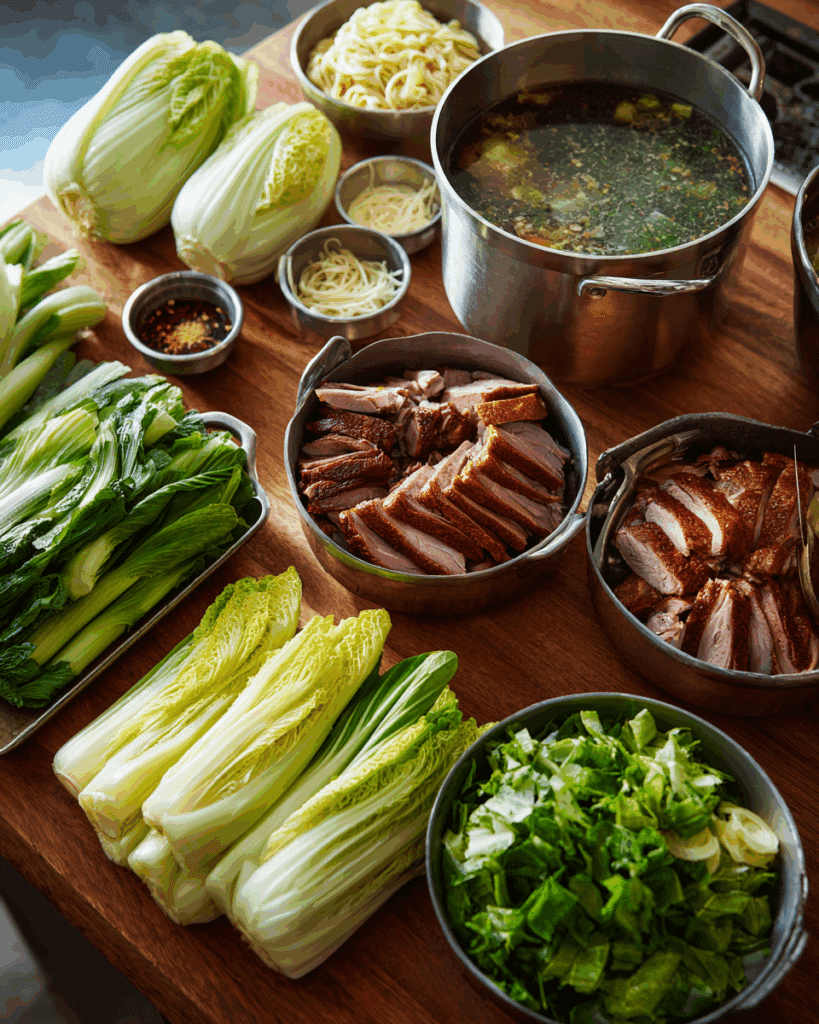
Step 1: Preparing the Duck and Broth
Begin by organizing your duck. If you’re using Cantonese roast duck, identify the four to six meatiest pieces and set them aside for topping the final soup. These should have a good balance of crispy skin and juicy meat. The rest of the duck will be used to infuse the broth.
Place the remaining duck pieces—bones and all—into a medium-sized soup pot. Pour in 4 cups of water, enough to cover the duck. Add 1 teaspoon of chicken bouillon paste or 1 tablespoon of light soy sauce for a foundational umami base. If you’re working with frozen duck, use all of it for the broth and skip the bouillon paste. Bring everything to a boil over high heat.
Once the pot reaches a rolling boil, lower the heat and cover it. Let the duck simmer for 20 minutes. This slow simmering process allows the bones and fat to release flavor into the water, transforming it into a savory broth that will serve as the backbone of your duck noodle soup.
Step 2: Prepping the Vegetables and Noodles
While the broth simmers, prepare the vegetables and noodles. Start with the napa cabbage—you’ll need about 8 ounces, or four large leaves. Trim off the white ends, then slice the leaves lengthwise and cut them crosswise into strips about ¾-inch thick. This ensures they cook evenly and fit well in the bowl with the noodles.
Next, prepare a second pot of water and bring it to a boil for the noodles. Use 8 ounces of fresh noodles if available, or 4 ounces of dried noodles as a substitute. Fresh noodles provide a soft, bouncy texture that complements the duck perfectly. Cook them according to the package instructions, usually about 3–5 minutes for fresh and 8–10 minutes for dried.
Once cooked, drain the noodles and rinse briefly with warm water to remove excess starch. Set them aside in a colander while you finish the broth.
Step 3: Reheating the Reserved Duck Pieces
While the broth continues to develop flavor, preheat your oven to 325°F (160°C). Line a baking sheet with aluminum foil and place the meaty duck pieces you reserved earlier on the tray. Heat them in the oven for 8 to 10 minutes, just enough to warm through and slightly crisp the skin again. After reheating, leave them in the warm oven until you’re ready to serve.
This step is optional but recommended. It enhances the texture contrast between the broth-soaked duck and the freshly roasted pieces placed on top at the end—one of the most satisfying parts of a well-made duck noodle soup.
Step 4: Finishing the Broth
After the broth has simmered for 20 minutes, remove the lid and add the sliced napa cabbage to the pot. Sprinkle in ¾ teaspoon of salt (or use ½ teaspoon salt and ¼ teaspoon MSG for a restaurant-style flavor), ¼ teaspoon of sesame oil, and ⅛ teaspoon of white pepper.
Raise the heat slightly to return the broth to a light simmer, then reduce it to medium-low. Let it cook uncovered for another 5 minutes, just until the cabbage is tender but still vibrant. This brief simmering ensures the vegetables stay crisp yet flavorful, absorbing the savory broth.
Step 5: Assembling the Bowls
You’re now ready to assemble the duck noodle soup. Divide the cooked noodles evenly between two large soup bowls. Spoon the hot broth into each bowl, making sure to include a generous amount of napa cabbage and duck pieces from the pot.
Finally, top each bowl with the reheated duck pieces from the oven. These should rest elegantly on top of the noodles, skin-side up, adding visual appeal and a textural element that sets your duck noodle soup apart from ordinary homemade soups.
Step 6: Garnishing and Serving
Finish the dish with a generous sprinkle of chopped cilantro. This final touch adds brightness, freshness, and aroma to the soup. For those who prefer variety, optional garnishes can include chopped green onions, fried garlic, or a squeeze of lime for brightness.
Serve your duck noodle soup immediately while steaming hot. Each spoonful will deliver layers of flavor—from the richness of the duck-infused broth to the tenderness of the noodles and the punch of aromatic herbs.
Whether you’re cooking for a cozy night in or impressing guests, this step-by-step method brings restaurant-quality duck noodle soup to your home kitchen with ease and authenticity.
Duck Noodle Soup Thai-Style Secrets
What Makes Thai Duck Noodle Soup Unique?
Duck noodle soup is enjoyed across many Asian cultures, but the Thai-style version stands out for its bold flavors, delicate balance, and street-food roots. Known locally as kuay teow ped, Thai duck noodle soup combines rich broth, sweet-savory roast duck, and earthy herbs, creating an incredibly satisfying bowl that engages all the senses.
Unlike Chinese or Vietnamese versions, Thai duck noodle soup often leans into a spicier, more herbal profile. While the broth is typically clear, it’s infused with complex aromatics like coriander root, white pepper, garlic, and sometimes cinnamon or star anise. These elements add depth and warmth to the soup without overwhelming the duck’s flavor.
The Thai approach also embraces the idea of layering textures and tastes. You’ll find chewy noodles at the base, surrounded by silky broth and finished with crunchy napa cabbage and bright cilantro. Every bite is different, yet perfectly balanced—a hallmark of Thai culinary philosophy.
The Thai Flavor Balance: Sweet, Salty, Sour, Spicy
One of the key secrets to mastering Thai duck noodle soup is balancing the traditional Thai flavor quadrant. In Thai cuisine, every dish must balance sweet, salty, sour, and spicy elements.
- Sweet: Comes naturally from the duck and cabbage
- Salty: From soy sauce, fish sauce, or bouillon paste
- Sour: Often introduced with a splash of vinegar or a slice of lime
- Spicy: Added by chili flakes, chili oil, or bird’s eye chilies
In duck noodle soup, these flavors are not added all at once. Instead, they’re layered during the cooking process and adjusted at the table. This customizability is part of what makes the Thai version of duck noodle soup so deeply satisfying.
Adding crushed peanuts, pickled garlic, or chili vinegar at the end allows each person to personalize their bowl. It’s this interactive element that makes Thai duck noodle soup not just a meal, but an experience.
Herbs and Aromatics That Define Thai Duck Noodle Soup
Another signature of the Thai-style duck noodle soup is the use of fresh herbs and spices. Common ingredients include:
- Coriander root: Provides a peppery, citrusy base flavor
- Garlic: Infused into the broth or sautéed into oil for added aroma
- White pepper: Adds a mild heat with earthy undertones
- Cilantro: Used as a garnish to freshen the final dish
- Green onions: Optional, but offer an added sharpness
These herbs are either added directly to the soup during cooking or used to infuse oil or broth before being strained. Their role is not to overpower the duck but to lift its natural flavor and create aromatic layers that bloom with every bite.
The Thai kitchen approach is all about respecting the main ingredient—in this case, duck—and building around it rather than masking it. When done right, the result is a duck noodle soup that feels both rich and refreshing, satisfying yet light.
The Role of Condiments in Thai Duck Noodle Soup
One of the joys of enjoying duck noodle soup in Thailand is the condiment station. Every noodle shop offers a selection of additions so you can tweak your bowl to your exact taste. Some common condiments include:
- Chili vinegar: Adds acidity and a mild heat
- Crushed peanuts: Brings texture and slight sweetness
- Fish sauce: Boosts umami and salt
- Sugar: For rounding off spicier versions
- Chili flakes or oil: For those who want an extra kick
Even when made at home, setting out a few of these condiments on the table allows each eater to bring the bowl to life their way. The flexibility is part of what makes Thai duck noodle soup so enjoyable—it’s a dish that evolves with your mood.
Why Thai Duck Noodle Soup Is Gaining Global Popularity
In recent years, Thai duck noodle soup has emerged from the shadows of pad Thai and tom yum to become a favorite among global food lovers. Its rich flavor, comforting texture, and the ability to adapt to different spice levels make it universally appealing.
Unlike many noodle soups that require complex ingredients or long hours, Thai-style duck noodle soup is relatively easy to prepare once you understand its structure. It’s this accessibility, combined with its unforgettable taste, that is helping it become a modern classic.
So, whether you’re new to Thai cooking or an experienced home chef, this version of duck noodle soup is a must-try. Its harmony of ingredients, cultural authenticity, and pure comfort in a bowl make it one of the most rewarding dishes you can master in your kitchen.
Tips for Customizing Your Bowl

Adjusting Spice Levels to Suit Your Heat Tolerance
One of the best things about this dish is how easily you can control the heat. If you’re a fan of bold, fiery flavors, adding Thai bird’s eye chilies or a spoonful of chili oil will do the trick. These ingredients introduce a clean, sharp heat that enhances the overall profile without overpowering it.
On the other hand, if you’re cooking for kids or those with milder palates, simply leave out the spicy elements. The dish holds up beautifully on its own thanks to the rich broth and savory meat. A small pinch of white pepper is usually enough to give it warmth without sharpness.
You can also serve extra chili flakes or chili vinegar on the side so everyone can personalize their bowl at the table. This is particularly helpful when preparing the meal for a group with varying spice preferences.
Swapping Proteins for Dietary Flexibility
While the traditional version calls for duck, you can still enjoy a rich and satisfying meal using alternative proteins. Here are a few options that work well in both taste and texture:
- Chicken thighs: Skin-on and bone-in cuts work best, as they mimic the fatty richness of duck. Roasting or slow-simmering them adds extra flavor.
- Tofu: Firm or extra-firm tofu can be marinated and pan-seared to bring a smoky bite. It soaks up broth flavors exceptionally well.
- Mushrooms: Varieties like shiitake or oyster provide a deep umami flavor that makes them ideal for vegetarian versions.
- Seitan or plant-based meat: A solid alternative for those looking for a high-protein vegan option. Just be sure to choose products that hold up well in broth.
These substitutions allow the dish to be accessible for a wide range of diets while still maintaining its character. Whether you’re reducing meat intake or need a quick weeknight meal, the flexibility of the core structure makes this dish extremely versatile.
Modifying the Broth for Different Palates
The broth is the soul of the dish, and it’s easy to adapt depending on what ingredients you have or what flavor notes you want to emphasize.
- For a lighter broth, skip the bouillon and focus on herbs like coriander, lemongrass, and ginger to create a more refreshing base.
- For added depth, add a splash of dark soy sauce or simmer with mushrooms to bring out earthy tones.
- To sweeten the base, a pinch of palm sugar or a teaspoon of brown sugar can help balance saltier ingredients.
- To add sourness, a splash of rice vinegar or lime juice at the end brightens everything up.
Each small adjustment changes the mood of the broth, allowing it to suit different seasons, tastes, or dietary needs without compromising comfort or satisfaction.
Creating a Fully Balanced Meal with Simple Add-Ons
While this dish is filling on its own, you can build it into a well-rounded meal by adding a few sides or garnishes. Some favorites include:
- Soft-boiled eggs: Halved and placed on top, they bring extra richness and a creamy texture.
- Pickled vegetables: Add a tangy bite that cuts through the broth’s richness.
- Fried garlic or shallots: Sprinkle over the top for added crunch and aroma.
- Steamed greens: Baby bok choy or spinach cooked lightly in salt water can add extra nutrition and color.
These additions not only provide variety in texture and taste but also help you turn a simple bowl into a full, satisfying dinner.
Storing and Reheating Tips for Leftovers
If you have leftovers, store the components separately for the best results. Keep the broth in one container, the noodles in another, and any toppings or garnishes in a third.
When reheating:
- Broth: Simmer gently on the stovetop to restore its full flavor.
- Noodles: Dip briefly in hot water to loosen and warm them without overcooking.
- Toppings: If they include crispy duck or vegetables, reheat them in a toaster oven or air fryer to maintain texture.
This way, even reheated portions taste fresh and intentional, not soggy or bland.
Where to Find It and What to Look For
Popular Spots Across the United States
In major cities with strong Asian food scenes, this noodle-based soup is often a hidden gem on the menu. You’ll commonly find it at Thai, Chinese, or Vietnamese restaurants, sometimes listed under specialty soups or noodle bowls. Areas like Los Angeles, New York City, San Francisco, and Houston are home to long-standing eateries that serve authentic, homemade-style versions that rival even home cooking.
Food trucks and market stalls in urban neighborhoods may also carry this dish, often featuring it during colder months or food festivals. Don’t be afraid to ask if it’s available—even if it’s not on the main menu, some chefs are happy to prepare it if they have the ingredients on hand.
What to Expect on the Menu
The name of the dish may vary slightly depending on the restaurant. Some may refer to it as roast duck noodles, while others use names influenced by regional dialects or local language. Thai restaurants might include terms like “kuay teow,” while Chinese menus could list it under “Cantonese-style noodle soup.”
No matter what it’s called, you’ll want to look for a few key details in the menu description:
- Roasted or braised meat (preferably bone-in)
- Clear or mildly seasoned broth
- Fresh or hand-pulled noodles
- Optional herbs or pickled vegetables
These components hint at a thoughtful recipe that honors tradition and flavor.
How to Spot a Quality Bowl
Once the dish is served, several indicators will tell you if you’ve found a good version. First, look at the clarity and color of the broth. A well-made broth should be slightly glossy with a light golden or amber hue. It should smell savory and rich without being too pungent.
The noodles should be slightly firm and not overly soft or soggy. Ideally, they’ll hold their shape well in the bowl and offer a satisfying bite.
The meat should be tender and flavorful, with at least some pieces that still have their skin intact. The fat under the skin should be rendered but not greasy, and the flavor should be well-developed—indicating it was either slow-cooked or roasted properly.
Fresh herbs or garnishes like chopped cilantro, scallions, or crispy garlic flakes are also signs of care in preparation. These small details contribute significantly to the overall experience.
Ordering Tips for First-Timers
If it’s your first time ordering, don’t hesitate to ask the staff about the level of seasoning, the spiciness, or what comes on the side. Many places offer condiment trays or additional toppings like lime wedges, pickled chili, or fish sauce to adjust the flavor to your liking.
When dining with others, consider ordering this soup along with lighter dishes to balance the richness. Vegetable spring rolls, papaya salad, or grilled skewers make great accompaniments without overwhelming the meal.
And if the restaurant offers a takeaway version, ask if they can pack the broth, noodles, and toppings separately. This keeps the ingredients fresh and prevents the noodles from absorbing too much liquid before you’re ready to eat.
Comparing Jamie Oliver’s Version to the Traditional Bowl
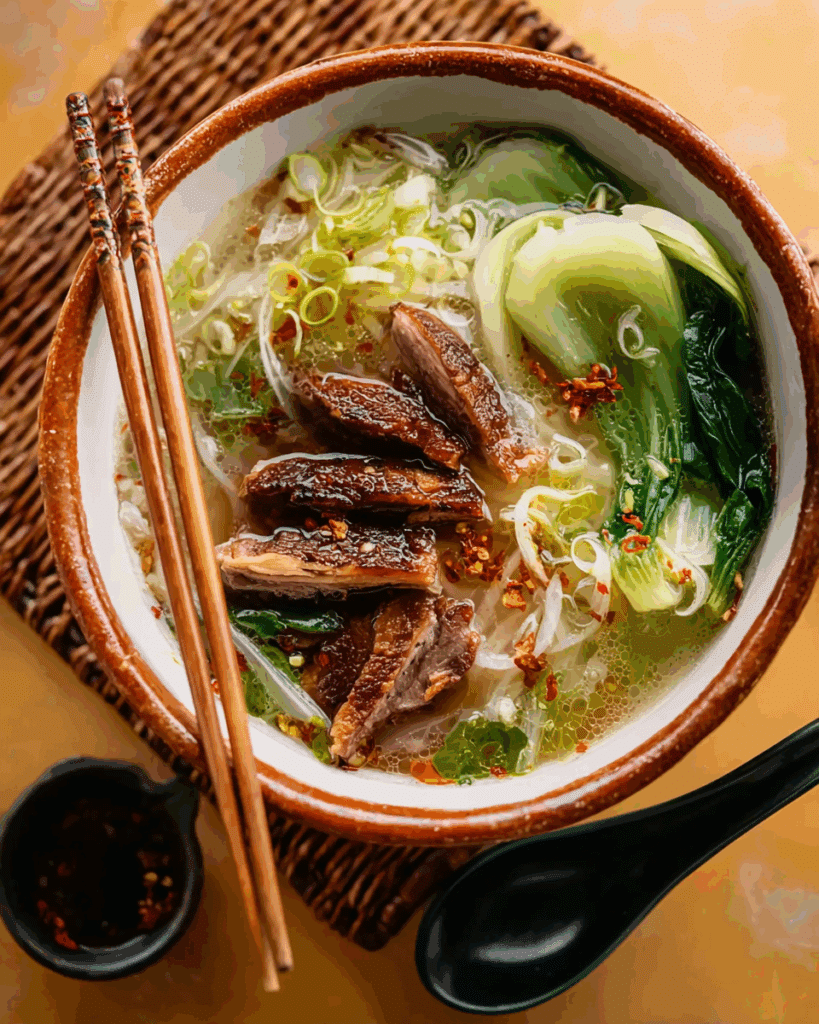
A Look at Jamie Oliver’s Interpretation
Jamie Oliver, known for his rustic and approachable cooking style, has put his own spin on many Asian-inspired dishes, including this one. His version typically simplifies the preparation process, focusing on readily available ingredients and time-saving methods that suit Western home kitchens.
In his take, the meat is often pre-cooked and sliced instead of simmered in the broth. He may use store-bought stock as a base, adding aromatics like ginger, garlic, and spring onions for depth. Additional flavor boosters such as hoisin sauce, star anise, and soy sauce often make appearances to mimic the richness found in more authentic versions.
He also tends to add plenty of vegetables—carrots, bok choy, or bean sprouts—for freshness and balance. These changes result in a vibrant and hearty bowl that appeals to a wide range of home cooks, especially those who want big flavor without spending hours in the kitchen.
What Traditional Versions Do Differently
Traditional recipes focus on layering flavors through longer cooking times and intentional ingredient choices. The meat is typically simmered with bones to enrich the broth naturally. There’s more attention given to seasoning slowly, using herbs and spices that are authentic to the dish’s cultural roots.
Rather than relying on sauces to create depth, traditional methods extract flavor directly from roasted meat, dried herbs, and simmered vegetables. The result is often more subtle but deeper in complexity.
For example, using coriander root instead of just leaves, or infusing broth with white pepper and a touch of sesame oil, provides a unique taste that’s hard to replicate with bottled sauces. Fresh aromatics are central, and timing each addition carefully ensures balance and harmony in the final bowl.
Advantages of Each Style
The Western approach offers accessibility. If you’re short on time, unfamiliar with Asian ingredients, or want to make the dish with pantry staples, the simplified method delivers impressive results with less effort. It also encourages creativity, letting you adjust the base, toppings, or even proteins based on what you have available.
The traditional method, however, delivers authenticity. If you’re looking for a culinary experience that mirrors what you’d find in Southeast Asia, the traditional route is unmatched. It may take longer and require more specific ingredients, but it pays off with every spoonful.
Which One Should You Choose?
That depends on your goals. If you’re cooking for the first time and want something straightforward yet flavorful, a Western-style version might be the perfect starting point. It lets you explore the flavor profile without diving into complex techniques.
But if you want to honor the cultural roots of the dish and experience it the way it was originally intended, traditional methods will guide you there. They teach patience, introduce new ingredients, and provide a deeper appreciation for Southeast Asian culinary traditions.
Duck Noodle Soup Variations You Should Try
Cantonese-Style Duck Noodle Soup
Cantonese cuisine is well known for its roasted meats, and Duck Noodle Soup is no exception. In this version, the soup often features thin egg noodles in a clear but deeply savory broth, enhanced by roasted duck that has been seasoned with five-spice powder, soy sauce, and Shaoxing wine.
The broth in a Cantonese-style Duck Noodle Soup is typically simmered with duck bones for a few hours, resulting in a slightly oily but rich stock that clings beautifully to the noodles. Garnishes are kept minimal—usually just a few scallions or a dash of white pepper—allowing the flavor of the duck to shine through.
This variation is ideal for those who love a clean, focused flavor with a refined texture. It’s comforting, rich, and showcases the quality of the duck as the centerpiece of the bowl.
Vietnamese Duck Noodle Soup
Vietnam brings its own twist with Duck Noodle Soup, drawing from the flavors of pho but using duck instead of beef or chicken. The broth is often aromatic, infused with star anise, cinnamon, ginger, and clove, giving it a warm, spiced profile.
Instead of egg noodles, you’re more likely to find rice noodles—either wide or thin—and the duck may be poached rather than roasted. This results in a lighter, more delicate version of Duck Noodle Soup that is often served with a plate of fresh herbs, bean sprouts, lime wedges, and chili on the side.
This variation is popular for its clean flavors and herbal freshness. It’s perfect for those who want a nourishing soup with less fat but still crave the depth that duck brings to the dish.
Thai-Style Duck Noodle Soup
Thai versions are bolder and more layered, reflecting the country’s culinary style. The broth in Thai Duck Noodle Soup is typically seasoned with white pepper, fish sauce, sugar, and sometimes a hint of vinegar. Herbs like cilantro and garlic are essential, and it’s not unusual to find fried garlic or crispy shallots sprinkled on top.
This variation may also include pickled mustard greens or bok choy for a slight tang and crunch, which balance the richness of the duck. Thai noodle soups often come with a side tray of condiments—chili vinegar, sugar, fish sauce, and crushed peanuts—allowing each person to adjust the bowl to their liking.
Thai Duck Noodle Soup is particularly loved for its bold flavor combinations and the option to personalize every bowl. It’s a hearty, flavorful dish that warms you from the inside out.
Fusion and Modern Takes on Duck Noodle Soup
Modern chefs around the world are taking inspiration from traditional Duck Noodle Soup and infusing it with global elements. For example:
- Using soba noodles instead of rice or egg noodles for a nutty twist
- Incorporating miso paste or mushroom broth to create a Japanese-style base
- Topping the soup with a soft-boiled ramen egg for richness and visual appeal
- Adding chili oil and fresh basil for a Southeast Asian-meets-Western fusion bowl
These creative versions of Duck Noodle Soup showcase its adaptability. Whether you follow traditional techniques or embrace fusion cooking, the core idea remains the same: deep, satisfying flavor delivered through broth, noodles, and succulent duck.
Why You Should Try Every Version
Exploring different types of Duck Noodle Soup isn’t just about taste—it’s also a way to experience different cultures through food. Each version reflects the local ingredients, cooking techniques, and flavor preferences of the region it comes from.
Trying a Cantonese-style bowl gives you a glimpse into the elegance of Chinese culinary tradition. A Vietnamese version introduces you to herbal lightness and balance. The Thai bowl is a spicy, sweet, and salty explosion, while modern twists bring exciting new interpretations to the table.
No matter which you choose, each variation of Duck Noodle Soup is an opportunity to appreciate the rich diversity of Asian cuisine—and maybe even inspire your own signature version at home.
Conclusion
Duck Noodle Soup is far more than just another bowl of broth and noodles. It’s a dish that carries tradition, flavor, and soul. Across various cultures—from Thailand’s herbaceous, spice-kissed version to the refined elegance of Cantonese preparation and the aromatic lightness of Vietnamese style—this soup adapts, evolves, and comforts in every form.
What makes Duck Noodle Soup truly special is its ability to strike balance. The richness of the duck meat blends harmoniously with a carefully crafted broth, soft yet chewy noodles, and fresh herbs that bring brightness to every bite. Whether you’re cooking it for the first time or perfecting a family recipe passed down through generations, this soup invites creativity, care, and cultural appreciation.
It’s also a dish that respects simplicity. You don’t need complicated tools or rare ingredients to make a meaningful, restaurant-quality bowl of Duck Noodle Soup at home. All you need is time, attention, and a passion for building flavor step by step—from selecting the right duck to layering the broth with depth and seasoning.
As you’ve seen throughout this guide, Duck Noodle Soup can be personalized endlessly. You can make it spicy or mild, load it with herbs or keep it simple, go traditional or try fusion. No matter the variation, the essence of the soup stays the same: comforting, flavorful, and deeply satisfying.
So the next time you’re craving something hearty and soulful, skip the usual options and make a bowl of Duck Noodle Soup. It’s a recipe that warms more than your stomach—it nourishes your spirit and connects you to culinary traditions that span generations and borders.
FAQs About Duck Noodle Soup
How do I store and reheat leftover Duck Noodle Soup?
To keep the texture and flavor of Duck Noodle Soup intact, it’s best to store the components separately. Place the broth in an airtight container, the cooked noodles in another, and any toppings or meat in a third container. Store them in the refrigerator for up to 3 days. When reheating, warm the broth gently on the stove until simmering. Briefly dip the noodles in hot water to loosen them up, then combine everything in a bowl and garnish as desired. This method keeps the soup tasting fresh and prevents the noodles from soaking up too much broth while stored.
What type of noodles should I use in Duck Noodle Soup?
There are many noodle options that pair well with Duck Noodle Soup, and the best choice depends on the style you’re aiming for. Thin egg noodles are often used in Chinese-style preparations, while rice noodles are more common in Thai and Vietnamese versions. Fresh noodles tend to absorb broth flavors better and provide a more authentic texture, but dried noodles work well too. Just make sure to cook the noodles separately and rinse them before adding to the bowl to prevent them from becoming too soft.
Can I make Duck Noodle Soup without bones?
Yes, you can make Duck Noodle Soup without using bones, although the depth of flavor may not be quite as rich. If you’re working with boneless duck breast or thigh, consider boosting the flavor of your broth with additional ingredients like soy sauce, miso paste, or bouillon. You can also simmer mushrooms, onions, or aromatics like garlic and ginger to create a more complex broth. While bones contribute natural collagen and richness, boneless versions can still be very satisfying with the right enhancements.
What is the best duck to use for Duck Noodle Soup?
The best duck to use for Duck Noodle Soup is Cantonese-style roast duck. It’s already seasoned with soy sauce, five-spice powder, and other aromatics that give the soup its distinctive rich flavor. If Cantonese roast duck isn’t available, you can use fresh duck and season it yourself before roasting or simmering. The key is to use duck with the skin and some fat intact, as these components add depth to the broth. Some people also use leftover duck from previous meals, which works well if you simmer it long enough to extract flavor.

